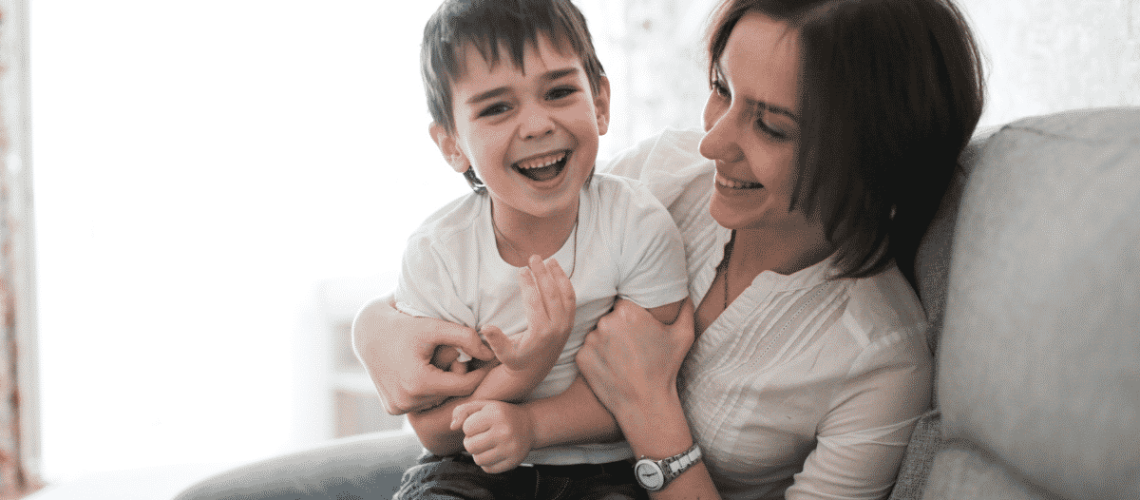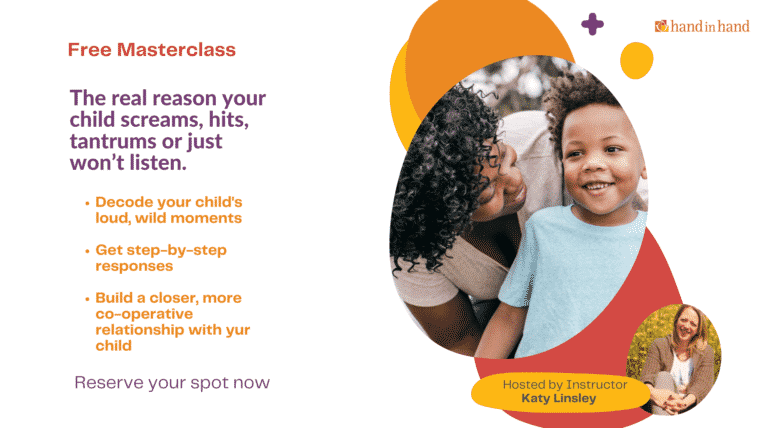What does your instinct tell you to do when your child is crying?
Or when they scream and tantrum?
Is it to have them stop making a noise as quickly as possible?
What if I said the opposite is actually the most helpful thing to do? Especially if your child has been hitting, kicking or getting angry and aggressive recently.
What if I told you that responding to crying differently could prevent aggression?
This is what I want to share today. Because, learning how to respond in a new way when my child cries has had a direct impact on the aggression. I don't need to prevent aggression as much, because I just don't see it as much these days.
If you’ve been at your wit’s end about how to control your child’s behaviour, if their needs seem unmeetable, if they are disagreeable, angry, defiant or refuse your suggestions all the time, read on and I'll share how I learned about this one simple switch and how it changed so much for us.
In fact, this switch in response has changed everything I thought I should do to prevent my child’s aggression.
Our change began with a letterbox and inconsolable crying
My child was four when they trapped their fingers in my friend's letterbox.
This letterbox was not your usual everyday type. It was fitted with a special anti-burglar mechanism to STOP someone reaching through and opening the door, or at least to stop them getting their hand out again.
That’s great if the hand belongs to a burglar, but not so great when it's my bored four year old, fiddling away with it because I was still chatting to my friend.
All of a sudden I heard crying.
My child was freaked out by having his fingers stuck tight and the pain this caused.
In fact, it took three adults a good two minutes to release his hand, by which time my child was inconsolable.
My lovely friends tried everything they could think of to make things better. They:
- Shushed in soothing tones
- Told my child that they were ok
- Offered chocolates and sweets for being so brave (despite them still crying their eyes out)
- Dad even tried a zany dance in a bid at distraction
And what did I do?
Well, I did none of this.
It wasn’t that I was being harsh, or stoic or uncaring. It was just that I had learned a new way to respond when a child cries.
So, I checked that their little fingers didn’t need first aid, and that they weren’t cut or bleeding. There were no blood blisters.
And then I just sat with him while he cried.
I listened. Intently. Fully.
How does responding like this prevent aggression?
Don’t get me wrong. At that point I was sick and tired of trying to handle my son’s rising aggression. But I wasn’t being harsh, cold or uncaring when I sat with him that day.
I kept warm. I held that space for him, and all the fear he held about getting his fingers stuck.
You see, I had learned that stopping a child’s tears doesn’t stop their hurt, or their fear. Not in the long term anyway. (Yes, it was a mic drop moment for me too—and one I didn’t quite believe until I saw it in action).
Why do we always try and shut crying down?
Let’s think about this. Crying is really hard to listen to, isn’t it? It’s uncomfortable.
Stop for a minute and think. How does it make you feel when you hear a child cry?
- Do you feel it in your stomach?
- Does it pound in your ears?
- Do you feel the weight of the child’s distress?
- Do you feel better when you have helped your child to stop crying?
For many of us, tolerance for crying is not high.
It is so often viewed as negative. People see it as disruptive. Or the pain or distress it represents as a symbol of our failure as a parent.
But rarely is it seen for what it is: Nature’s best way of helping humans offload intense feelings and emotions.
If I look back at that day, it’s so clear. My child was crying, more from fear than actual pain, at that point. And my friends got so distressed by the crying.
For generations we have been taught that if a child stops crying it means they are “better”. But actually, crying helps us all process the feelings and emotions around a difficult experience. And if we stop that process, where do you think they go?
The feelings get stuck and we carry the remnants around.
Think about anger and acceptance. Even when you can rationally explain what someone did and why it made you angry, even when you know that their motive was probably quite pure, you cannot accept an act or a person that made you angry until you have processed the anger.
You carry that around. If you relive it, it makes you angry again. You have a reaction.
Same thing with crying and upset. You need to work through it before you can move on. And so do our kids.
What happens when a child stores pent-up emotion?
Now, here’s another revelation. What happens when a child is carrying all this pent up emotion?
I’ve seen from experience that because fear doesn’t like being lodged, it seeks an alternative way out. Sometimes you’ll see this in what looks like attention seeking: whining or listlessness, teasing a sibling or your child doing something deliberately off limits. Soon this grows. Often it becomes anger and aggression.
I had seen all this before with my kids, but I hadn’t known what really caused it.
In fact, the same child who got hurt that day, had also been becoming increasingly aggressive towards other children, siblings, and me.
And I never guessed there was a link.
I had tried so many things to prevent aggression and it hadn’t worked
I had tried so many things to prevent aggression and to stop the actual behaviour, that I’d lost count.
- I’d tried explaining that it wasn’t nice, that it hurt others.
- I would give reminders before meeting up with other children about what behaviour I expected.
- I’d explain what the consequences would be if my child hurt another.
- I’d tried praise and rewards for good behaviour and consequences and punishments for poor behaviour.
Sometimes, briefly, I saw a difference, but no matter what I did, the aggression soon reared its ugly head again.
I felt drained and exhausted by it. I was embarrassed—for my son, but also about my abilities as a parent. What was I doing that was so wrong?
I never guessed that responding differently to crying and upsets would help prevent aggression. It just didn’t seem possible.
What your child’s anger and aggression can really tell you
When our children show up with challenging behaviour, like aggression, we can see it as a sign that something else is going on for them. Maybe they are scared, maybe they are triggered by an event, a memory or an emotion. Maybe they need to feel more of your presence.
Often, we don’t know.
But we do know that if a child repeats a difficult to handle behavior often, or if you can link it to requests, events or activities, their stuck fears or emotions are showing up in their behavior.
Take a child who is scared to sleep alone. They may cry over dinner or tease a sibling. They might refuse to get in the bath or out of it. They may have a whole list of needs and requirements you need to carry out before they agree to climb under their covers.
This is all stalling behaviour. It’s putting off facing the real fear. The need here is added security. Your attention. Your reassurance. And they will do all they can to get it, because what a child will rarely say is, “I’m scared about bedtime / being alone / the dark/ being away from you.”
Let’s get real. Often it’s just easier for a child to get your attention (although not the warm loving attention they truly desire) by knocking over their cup of water, or refusing to brush their teeth. This post, Five Types Of Bad Behavior and Why They Happen explains more.
And yes, eventually you may snap. They may cry.
And when they cry they have an outlet. They got to the cry they needed.
Your child may create opportunities, like this, by testing your patience and pushing on boundaries. They may test a limit, so you set it. Then it gives them a chance to cry and clear their fears.
Or it may happen, like it did for my child, when they have an accident or get hurt.
And this is when your response makes all the difference.
Your response makes all the difference if you want to prevent aggression
If we continue to see crying as something that needs shutting down, the cycle continues.
But if you can shift your mind to crying + listening = offloading fears, then what can you expect?
Well, how do you feel after a good cry? Peaceful? Empty? Calm? Hopeful?
There’s a levelling that happens after a good cry, isn’t there?
It’s the same with your child. If you can listen as all that hurt spills out, if you can listen intently, you will see the same change.
A calmness. New hope. Like a mental reset.
You'll prevent aggression because you give your child an outlet to let emotions go. Stored, they become aggression.
You’ll see the trust between you grow as well, because how good does it feel when you can be vulnerable with a person and receive validation and support?
We’ve been conditioned to stop our children’s upsets, but the truth is what what helps most is having an upset heard. This post, What to Stay During Staylistening shows you how to do this.
And my aggressive child?
Once I started listening this way my child’s aggression fizzled away.
Occasionally it rears its head again and when it does I know it’s because they need more listening from me, and I take it as an opportunity to connect and listen.
This change is so immense that I feel like I discovered a super power to use at the very moments that I used to feel most powerless.
How should you respond if you want to prevent aggression?
I share exactly what you can do to respond when your child hits out, plus other ideas for responding if you’ve hit a wall with your child’s challenging behaviour in this free class. See everything I cover here and learn new communication tools you can use to really reach your child.
Want to know the real reason your child screams, hits, tantrums or just won’t listen?
This class demystifies your child's loud reactions and big upsets. You'll get practical science-backed tools to work through them—even if you're frustrated and feeling like you've tried every parenting tip out there.
After this training, you'll be able to:
- Decode what's causing your child's defiance, whining, crying and more.
- Know how to respond to stop squabbling, power battles, complaining and testing limits from escalating using just five simple tools that are kind AND effective.
- Why you don't need to “fix” behavior to see a huge improvements and what to do instead.
- Stop yelling and using laughter and humor to connect with your child as you guide them, even if you feel totally burnt out right now.
- Stop using punishments that don't work, and instead use a framework that really reaches your child in their loud, wild or upset moment.
Use this link to watch now or schedule the most convenient time for you.
Schedule when to watch here.

